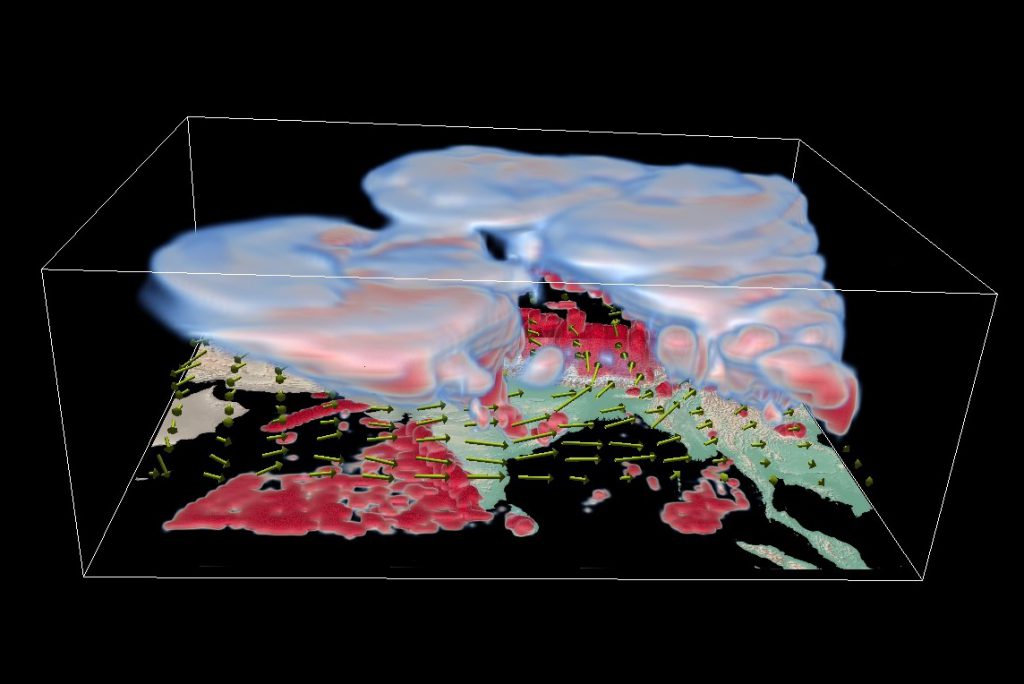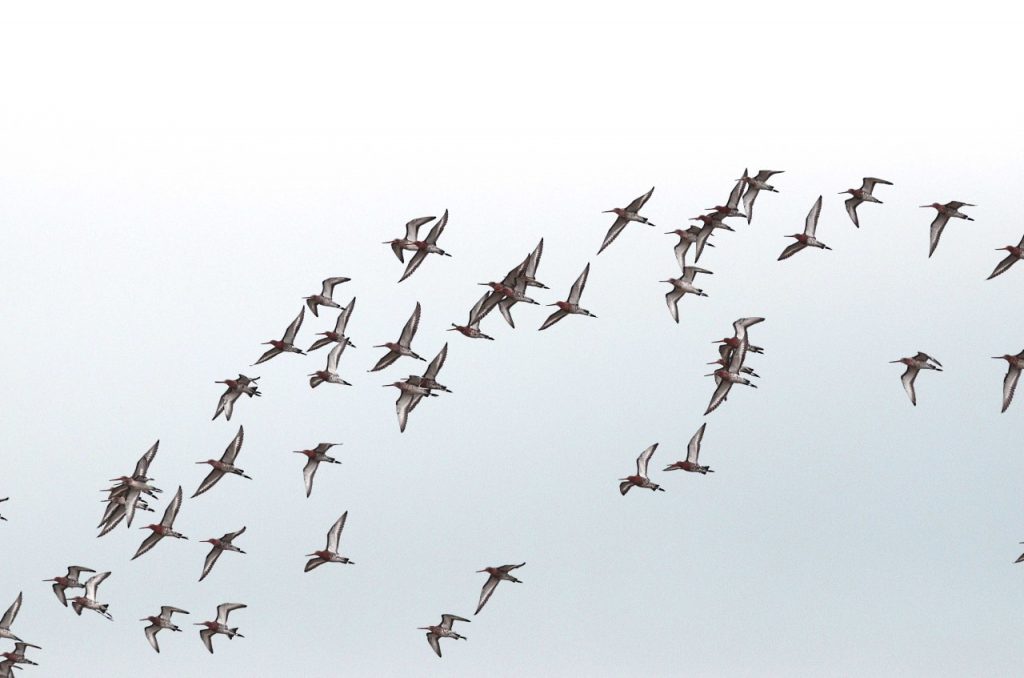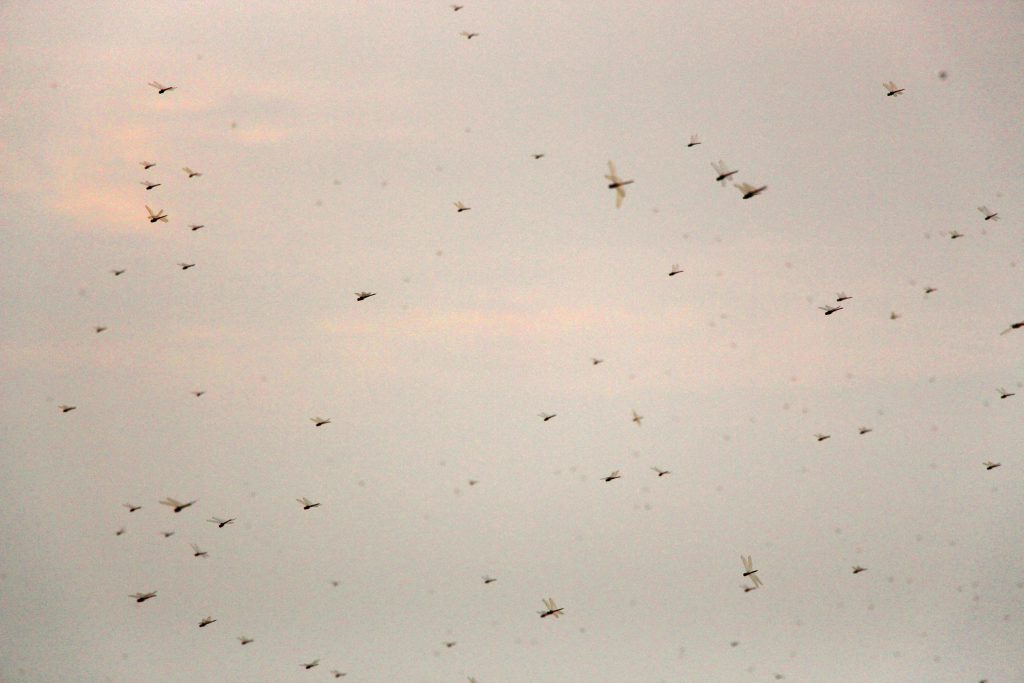The influence of wind currents on humans and non-humans

Chennai. 13 December 2016.
I woke up in the morning and headed to the tea stall nearby for my daily dose of morning chai. It was windier than usual: my outfit ruffled heavily, and the umbrella I was carrying to protect me from the drizzle was almost flying away. I returned to my room and looked up the weather forecast – a cyclone warning had been issued for the day.
The wind speed increased enormously in the next few hours, uprooting temporary structures made of tarpaulin and zinc sheets, even as the cyclone made landfall in Chennai. For the first time in my life, I truly appreciated the power of the wind. Scientists, however, have acknowledged it and attempted to study it in many different ways since the 14th century.
Wind currents: What are they?
Wind currents are formed when air flows across the Earth from regions of higher atmospheric pressure to those of lower pressure. This difference in pressure is created due to the unequal heating of the Earth’s surface, and is also influenced by its rotation. For instance, land near the equator heats up faster during summer, reaching higher temperatures than the water in oceans. As the land surface gets warmer, air above the land expands creating an area of low pressure. The air above the oceans, on the other hand, remains at a higher pressure as the water remains cooler than land. This difference in pressure causes wind to blow from the region of higher pressure to that of lower pressure – from the ocean to land. However, when the air rises above the land, it cools and loses its ability to hold water, thus bringing rain. During the winter, the cycle reverses, and air flows from land to the ocean, causing precipitation over the oceans.

(Image courtesy: Pradeep Kushwaha)
The amount of rainfall we receive on land, in turn, has far-reaching implications for an agrarian economy like India. An adage in our school textbooks also stands as a testament: “Indian agriculture is a gamble of monsoon.” Wind currents have a direct impact on us through the roles they play in determining the climate, but they are equally influential in the lives of certain other creatures we share the planet with.
Bird flyways
More than 1,000 bird species from nearly 30 countries migrate to India every year. These migratory birds fly to and from India via one of three flyways, the Central Asian Flyway, the East Asian-Australian Flyway, or the Asian-East African Flyway. Scientists have established that there are nine major flyways – routes in the sky – that birds use to migrate across the vast oceans and the high mountains, to different parts of the world. Among the major factors that these birds consider before or during their flight are different attributes of wind currents: speed, direction, and temperature. “Wind currents shape the direction and duration of avian migration,” says Nishant Kumar, Visiting Fellow at the Edward Grey Institute of Field Ornithology, University of Oxford, UK. He explains how these currents influence Black-eared kites’ choice to cross the highest peaks of the Himalayas (about 6,000 metres above sea level) to reach India.
“Wind currents shape the direction and duration of avian migration”
“We found that kites used this route to utilise the tailwinds that blow from Trans-Himalayas towards Mongolia, and in doing so, avoid a much longer route over the Tibetan plateau,” Nishant says. He adds that birds which are unable to use winds optimally are “less likely to survive in the long run, especially in the face of rapid anthropogenic transformations on Earth.”
The Central Asian flyway, which is used by the Black-eared kites, is known to be used by waterbirds as well, such as ducks and geese. But the wind speed and direction on the ground differ from what they are high up in the sky, and the birds must be able to gauge all of this from below, says Taej Mundkur, Senior Advisor at Wetlands International Global Office, Netherlands. For example, birds flying south from the Arctic to enter southern Asia must cross several latitudes and several winds circling the Earth, as they migrate. “You have these winds moving southwards, but also rotating with the rotation of the Earth. The birds use these high-altitude, fast-moving tailwinds to push them forward,” Taej adds.
Birds like the Bar-tailed godwit that migrate non-stop from Alaska to New Zealand and Australia across the Pacific Ocean make another compelling case. These birds, travelling around 1,000 km a day, rely on wind currents to push them through. “They use strong, high-velocity wind currents at altitudes between a few 1,000 metres and higher to undertake their annual migration,” Taej says. “We know that different birds migrate at different altitudes, and it may be some time before we understand how they make this choice. But what drives these differences is linked to the topography of the ground, wind speeds, and temperature.” Take for instance, the Bar-headed goose: a waterbird that migrates from Mongolia to India, crossing the high Himalayas. While their physiology enables them to fly at such high altitudes, wind currents and temperature also play crucial roles. Taej recalls a first-hand experience of unexpectedly witnessing bird migration in China one late November a few years ago. “There was a cold front that approached us from the North. And with that southward wind came all the birds. Overnight we heard the calls as thousands of geese and swans and ducks arrived and were around us in the morning light,” Taej says. “It was an amazing feeling to see the migration actually happening.”

Sailing with the wind
Unlike birds, insect migration is not so organised with well-defined flyways. Instead, they migrate along a broad front. “Most insects that fly high and use winds ultimately depend completely on wind direction because they can’t make headway against these fast winds, which are much faster than they can fly themselves,” Jason Chapman, Associate Professor at the University of Exeter, UK, says. As Chapman explains, insects have short lifespans and cannot afford long migrations with stopovers. So, they rely on winds to help them migrate long distances in a few days.
Insects have short lifespans and rely on winds to help them migrate long distances in a few days
The Americas and East Asia tend to have favourable wind patterns for insect migration. “In the spring, warm air moves northwards from Mexico through Central America. And the insects take advantage of this. But in the autumn, there is a succession of cold fronts moving south with winds blowing from the north. That gives a helping hand to the insects migrating south,” Chapman says. Thus, wind patterns generally favour insect migration northwards during spring and southwards during autumn.
The same is true of East Asia too, where the summer monsoons help insects migrate north, and the monsoons in the autumn help them migrate south. “And I think it’s no coincidence that these two parts of the world have massive insect migrations and pest problems in these seasons,” Chapman says.
A great example of insects migrating long distances is the globe skimmer. This dragonfly, weighing less than one gram, migrates from India to East Africa, across the Indian Ocean. If one were to account for body weight, globe skimmers are the longest non-stop migrants among any living organism. The secret behind this feat is in the way they use wind
currents for their advantage.
Johanna SU Hedlund, from the Centre for Animal Movement Research at Lund University in Sweden, and colleagues, including Chapman, modelled the migration of globe skimmers in a study they published in Frontiers in Ecology and Evolution in August 2019. They suggest that dragonflies use two strategies to fly: active flapping and gliding. This combination helps them fly for nearly 290 hours. If they were to only flap their wings, they would not be able to fly for more than four hours. Even the combination can only help them cross the Indian Ocean via the shortest route when there is little wind opposing them. But experimental findings suggested that the globe skimmers fly farther across to migrate longer distances nonstop. So, the team concluded that “wind assistance is essential” for the globe skimmers to cross the Indian Ocean. They further suggest that the globe skimmers may be using the intertropical convergence zone – the region over the world’s oceans where the northeast and southeast trade winds converge – to help their flight. This zone shifts with seasons, moving southwards in the autumn as winds blow from India and northwards in the spring as winds blow towards India. Globe skimmers use these wind directions to migrate over the Indian Ocean from India to Africa or vice versa.

Another insect, whose flight over seas was first speculated about a century ago, is the Crimson rose butterfly. A recent report suggests that these butterflies fly from Dhanushkodi – the southern tip of India in the Rameswaram Island – to Sri Lanka, across the Indian Ocean. Their migration pattern and time indicate that they possibly use monsoons to glide their way across the ocean.
Although these studies and others have discovered how insects use wind currents for migration, the findings may only be the tip of the iceberg. Climate change is affecting these wind patterns, and in turn, the migration routes of these winged creatures. When the monsoons failed in 2016, the crimson rose butterflies too were missing from their migratory pathways. Although we have a long way to go in understanding who uses these highways in the sky, these changing patterns serve as a warning. In the words of Roger Tory Peterson, an American ornithologist, “Birds are indicators of the environment. If they are in trouble, we know we’ll soon be in trouble.”
Joel P Joseph is a PhD student at the Centre for BioSystems Science and Engineering (BSSE), and a former science writing intern at the Office of Communications, IISc




